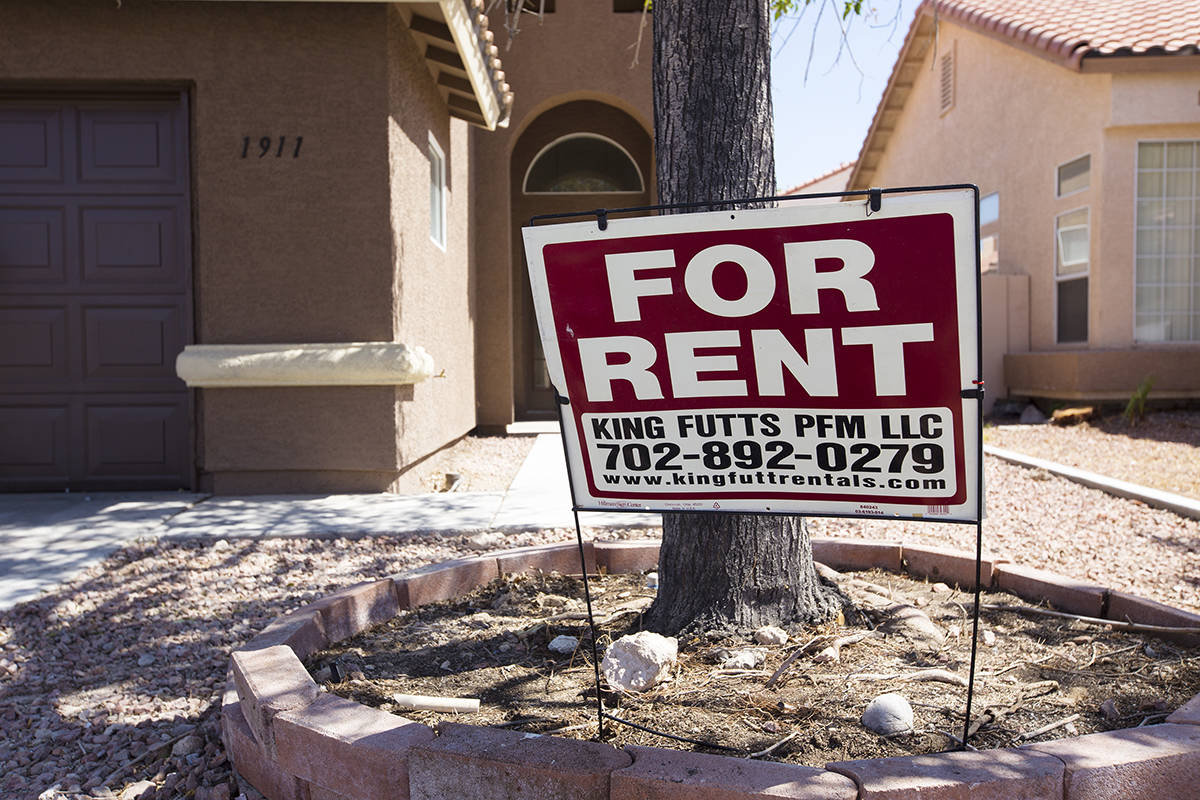Report: Thousands at risk of eviction by September
A report from the nonpartisan research group The Guinn Center suggests that between 272,000 and 327,000 Nevadans could face eviction by September after protections enacted because of the COVID-19 pandemic expire.
The Guinn Center report noted eviction risk manifests in two ways: long-term income loss and short-term cash flow problems. With the former, federal and state benefits are limited and/or unavailable, housing costs may exceed monthly income and re-employment prospects may be limited and benefits are expected to expire this summer before a full economic recovery occurs.
Cash-flow issues include delayed or inconsistent benefits, the cliff effect of several benefit programs — meaning that some may not significantly increase income and unexpected expenses during a time of economic fragility.
Between 118,000 and 142,000 households could struggle to pay their rent by September, the report found, affecting 272,000 to 327,000 residents. The Guinn Center found that almost 1 million tenants are at limited or no risk of eviction out of a total of 1,260,000 tenants in the state. The rest are considered at risk of eviction, and the report noted low-income individuals, people of color and undocumented residents are especially vulnerable to housing market disruptions.
The range in the number of tenants facing eviction is based on varying levels of unemployment expected among renters, with the 272,000 figure based on 32% renter unemployment and the higher number based on 38% renter unemployment. The forecast increases between August, when the eviction moratorium expires, and October, when enhanced unemployment insurance expires.
As savings and available credit run out in families facing unemployment, still more Nevadans will be at risk of eviction.
The Guinn Center report went on to predict as much as $1.1 billion in rental debt if economic conditions do not improve by the end of the year.
Every county in Nevada will be affected, but Clark County accounts for 249,700 of the renters at risk of eviction. Almost 50,000 Washoe County residents are in that position, and no other county comes close to 10,000 at-risk renters. The number for Nye County is 3,800.
Perhaps the most intriguing detail of the report lies in its analysis of historical data, which shows evictions have increased in Nevada as unemployment declined and the economy began to recover. During the recession which began in 2008, unemployment peaked in 2010 before starting a steady decline, but eviction filings peaked in 2013. Actual evictions peaked in 2012 and declined more quickly than filings.
The moratorium on evictions currently delays eviction proceedings, stops sheriffs from removing tenants from their homes, creates an incentive for landlords and tenants to negotiate payment agreements and allows local governments to set up rental assistance programs to distribute CARES Act funds.
When the moratorium expires Aug. 31, landlords will be able to immediately begin eviction proceedings against tenants who have been unable to pay and sue tenants for unpaid rent.
The resulting damaged credit history also could make it harder for the tenants to secure future housing.
The Kenny Guinn Center for Policy Priorities, which “represents the voice of the moderate middle that will move beyond the “either/or” political rhetoric of our time,” according to its website, states its mission is to be a nonprofit, bipartisan research and policy analysis center that provides independent, data-driven and well-reasoned analysis of critical policy issues that advance solutions toward a vibrant Nevada and Intermountain West region.















